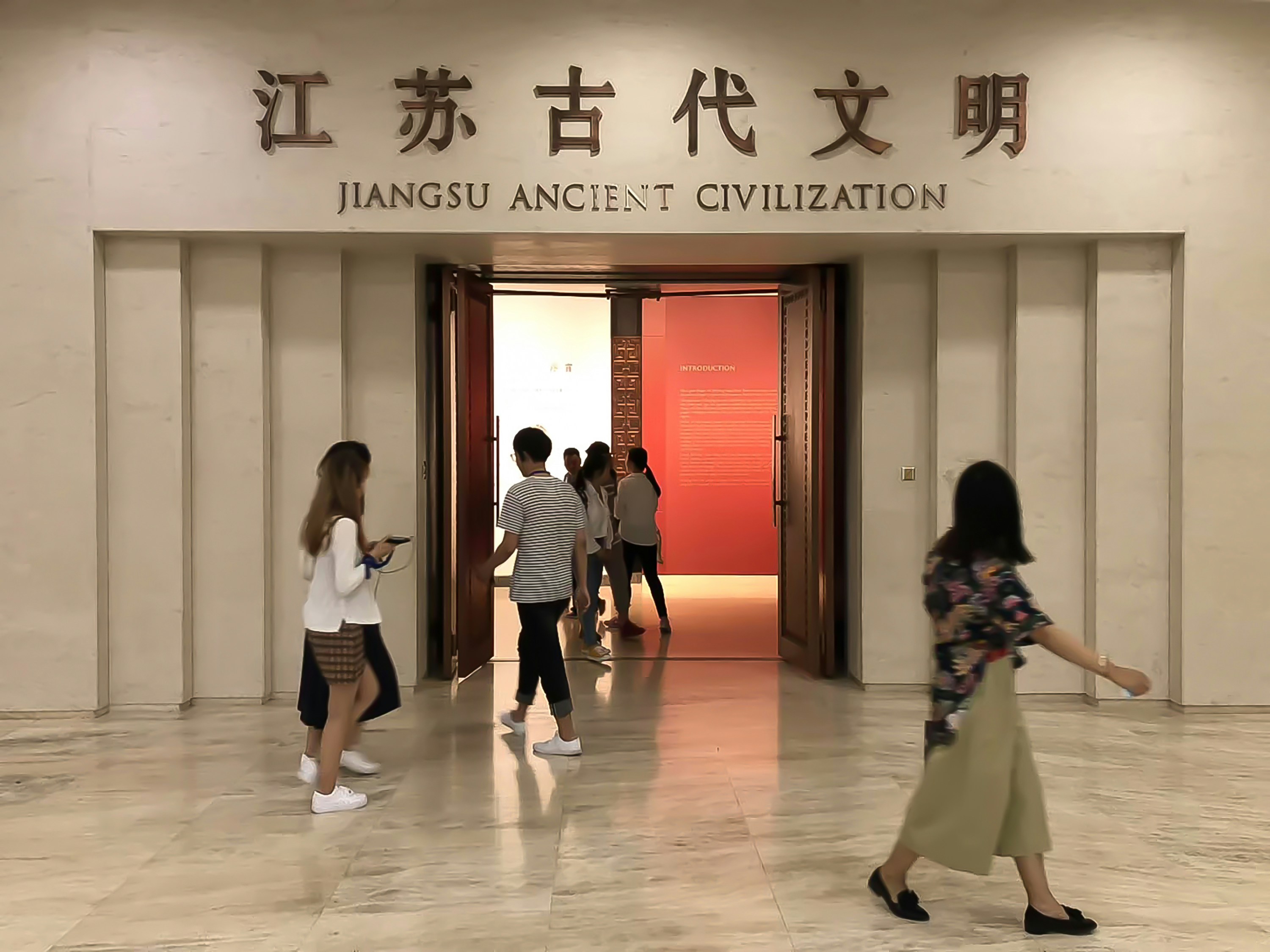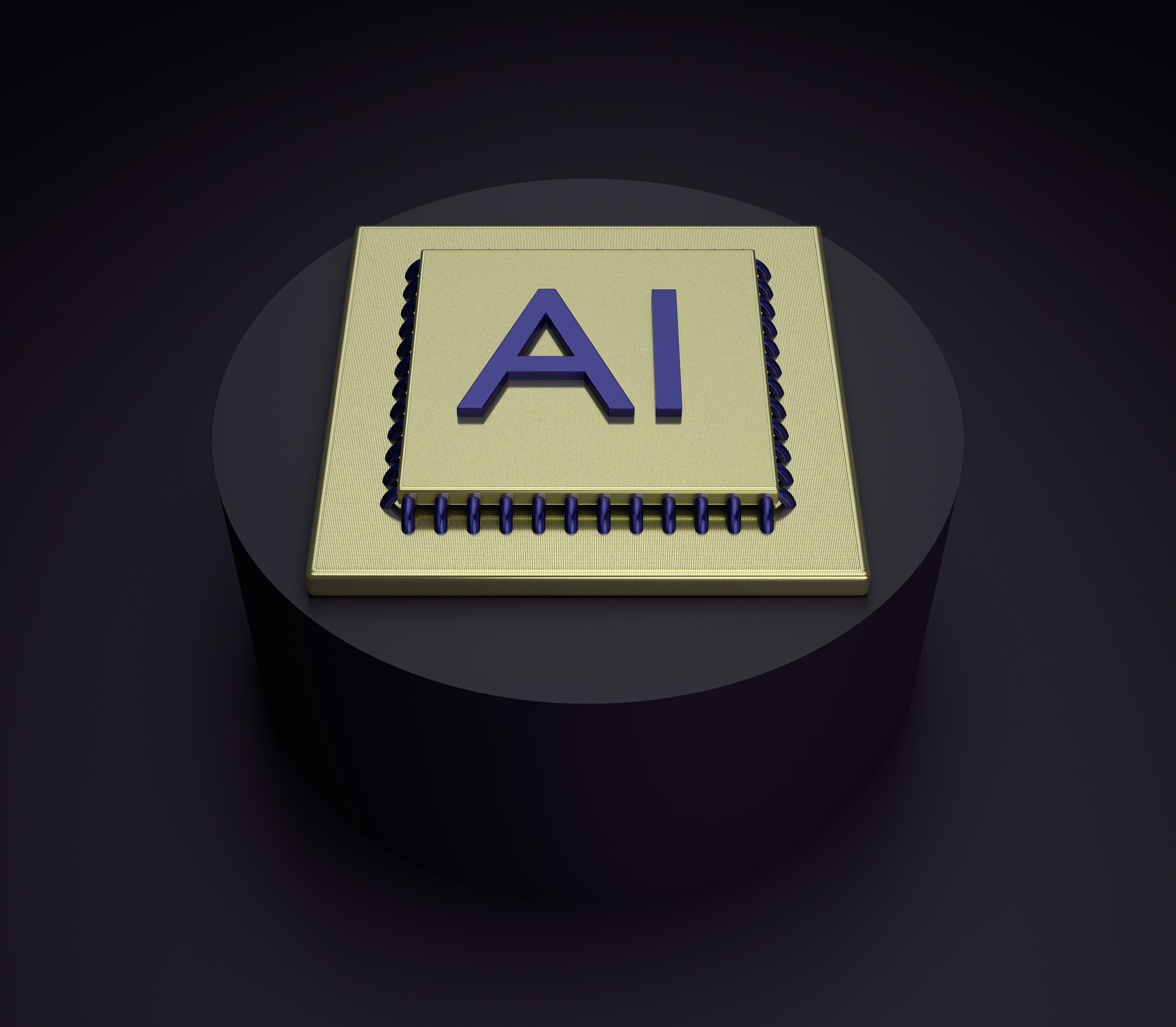Introduction to AI Technology and Economic Growth
Artificial Intelligence (AI) technology has emerged as a game-changer in various domains, fundamentally altering how businesses operate and innovate. Initially rooted in academic research during the mid-20th century, AI has evolved significantly, powered by advances in data processing, machine learning algorithms, and computational power. The infusion of AI into the marketplace has expanded its applicability, facilitating enhanced decision-making processes, automation of routine tasks, and the extraction of valuable insights from large datasets.
The relevance of AI in the modern economy is undeniable, as it permeates multiple sectors, including manufacturing, healthcare, finance, and logistics. By automating processes, AI not only streamlines operations but also reduces costs and minimizes human error. Moreover, AI-driven analytics enable businesses to predict market trends, cater to consumer preferences, and enhance productivity, leading to more efficient economic models. As companies increasingly harness AI tools, the potential for increased output and innovation becomes evident, driving overall economic growth.
The transformative potential of AI technology is further underscored by its ability to create new job opportunities in fields such as AI development, data science, and robotics. While some traditional jobs may be displaced due to automation, the emergence of AI leads to the development of new roles that necessitate advanced skills and expertise, thereby reshaping the global workforce landscape. Consequently, as economies integrate AI solutions, societal shifts towards a knowledge-based economy become more pronounced.
Ultimately, the intertwining of AI technology and economic growth presents a unique opportunity for nations to enhance their competitive edge on the global stage. By fostering an environment conducive to AI advancements, countries can leverage this technology to drive sustainable economic progress and improve the quality of life for their citizens.
Key Areas of Economic Growth Driven by AI
The integration of Artificial Intelligence (AI) technology into various sectors has catalyzed substantial economic growth across multiple domains, notably manufacturing, healthcare, finance, and agriculture. Each of these sectors has experienced transformative advancements attributable to AI, leading to significant improvements in productivity, efficiency, and overall economic outcomes.
In manufacturing, AI technologies such as automation, predictive maintenance, and quality control systems have revolutionized operations. Machines equipped with AI can analyze vast amounts of data in real time, predicting equipment failures and reducing downtime. Furthermore, the implementation of AI-driven robotics facilitates a higher level of precision and speed in production, ultimately leading to a marked increase in output and profitability for manufacturers. This sector’s growth has a ripple effect on supply chains, requiring skilled labor and resulting in job creation.
Healthcare has also been significantly enhanced by AI innovations. AI algorithms are increasingly utilized for diagnostics, personalized treatment plans, and patient management systems, which lead to improved patient outcomes and operational efficiency. For instance, AI-powered imaging analysis assists radiologists in detecting diseases early, thus contributing to enhanced treatment success rates. The economic ramifications in healthcare, including cost reductions and improved resource allocation, elicit broader societal benefits.
In the finance sector, AI facilitates better risk management, fraud detection, and the optimization of trading strategies. Financial institutions utilize machine learning algorithms to analyze market trends and consumer behavior, allowing for more informed decision-making. The unprecedented efficiency brought about by AI reduces operational costs and improves service delivery, which is beneficial for both consumers and service providers.
Lastly, agriculture is experiencing a digital revolution through AI technologies such as precision farming, which optimizes resource use and boosts crop yields. By employing sensors and AI analytics, farmers can monitor soil conditions and weather patterns more effectively, leading to not only increased productivity but also a reduction in environmental impact. Thus, AI plays a critical role in ensuring food security while supporting sustainable practices.
Job Creation Versus Job Displacement
The advent of artificial intelligence (AI) technology presents a complex array of implications for the labor market, with both potential job creation and displacement. On one hand, AI can lead to the creation of new employment opportunities. As businesses implement AI systems to enhance efficiency, they often require a workforce adept in advanced skills, such as data analysis, algorithm development, and AI system management. This demand for skilled professionals opens new career paths in sectors including IT, healthcare, and finance, where jobs are emerging to bridge the knowledge gap between traditional practices and innovative technologies.
Conversely, a significant concern arises regarding the displacement of jobs that can be automated. Tasks that are repetitive or follow a predictable pattern are increasingly being handled by AI systems. This trend is evident in industries like manufacturing and customer service, where robots and virtual assistants can perform duties traditionally carried out by humans. As a result, workers in these sectors may face unemployment or be compelled to transition into roles that require different skill sets. The challenge here lies in the ability of the workforce to adapt to these changes; many employees may lack access to training programs that can facilitate their transition into new jobs.
To effectively navigate the dual nature of AI’s impact on employment, proactive measures must be taken by both employers and policymakers. Upskilling initiatives play a vital role in ensuring that displaced workers attain the competencies necessary to thrive in an AI-driven economy. Collaborations between educational institutions and industries can foster training programs that prepare the current workforce for emerging job roles. Ultimately, striking a balance between the benefits of AI and the adverse effects on employment is crucial for a sustainable economic future.
Increased Efficiency and Productivity Through AI
Artificial Intelligence (AI) has emerged as a transformative force in the realm of business by significantly enhancing efficiency and productivity. One of the key ways AI contributes to these improvements is through the automation of routine tasks. By employing AI-driven systems, organizations can automate repetitive processes, freeing up valuable time for employees to focus on higher-value activities. For instance, chatbots can handle customer service inquiries, while AI algorithms can streamline supply chain management, ensuring that resources are allocated optimally.
Moreover, AI excels in data analysis capabilities. Modern organizations generate vast amounts of data daily, and making sense of this information is paramount for informed decision-making. AI technologies can process and analyze these large datasets far more quickly and accurately than human analysts. This capability not only leads to faster insights but also enables businesses to uncover trends and patterns that may not be apparent through manual analysis. As a result, organizations can leverage this information to make strategic decisions that bolster their competitive edge.
Another crucial aspect of AI’s impact on productivity lies in predictive analytics. AI systems can analyze historical data to forecast future outcomes, equipping businesses with the foresight to make proactive decisions. For instance, predictive maintenance powered by AI allows companies in manufacturing to anticipate equipment failures before they occur, minimizing downtime and enhancing operational efficiency. Organizations can thus allocate resources more effectively, manage risks more adeptly, and respond swiftly to changing market conditions.
Overall, the integration of AI technology into business practices profoundly boosts efficiency and productivity. By automating mundane tasks, enhancing data analysis, and utilizing predictive analytics, organizations can optimize operations and make data-driven decisions that propel them forward in an increasingly competitive landscape.
Impact on Small and Medium Enterprises (SMEs)
The impact of artificial intelligence (AI) technology on small and medium enterprises (SMEs) has become increasingly significant, as these businesses seek to leverage AI tools to enhance their operations. AI technology is no longer confined to large corporations; rather, it has been democratized, enabling SMEs to access advanced technological resources that were previously beyond their reach. This shift has opened up opportunities for smaller businesses to innovate, improve efficiency, and compete on a more level playing field with larger market players.
One of the primary advantages of AI for SMEs is the ability to streamline processes and automate routine tasks. By integrating AI-driven solutions into their operations, small and medium enterprises can reduce manual workloads, minimize errors, and increase productivity. For instance, AI-powered chatbots can handle customer inquiries, allowing employees to focus on higher-value tasks. Additionally, tools like predictive analytics enable SMEs to gain insights into customer behavior and market trends, thereby enhancing decision-making capabilities.
Moreover, access to AI tools is transforming how smaller businesses approach their marketing strategies. By utilizing AI algorithms, SMEs can tailor their marketing campaigns and target specific audiences more effectively. This personalized approach not only enhances customer engagement but also improves return on investment. Furthermore, AI solutions can assist in managing supply chains, optimizing inventory levels, and forecasting demand, which are crucial components for sustainable growth in a competitive marketplace.
As SMEs adopt AI technology, they gain a competitive advantage that enables them to innovate and expand their market presence. This technological progression becomes a driving force behind economic growth, not only for individual businesses but also for the broader economy. Embracing AI creates new avenues for entrepreneurship and revitalizes traditional sectors by encouraging the adoption of modern practices. The potential for growth through AI technology positions small and medium enterprises as vital contributors to the economic landscape.
Investment Trends in AI Technology
The investment landscape for artificial intelligence (AI) technology has witnessed significant shifts in recent years, reflecting a growing recognition of its potential to drive economic growth. Venture capital has emerged as a major source of funding for AI startups, with investors increasingly drawn to the promising returns associated with innovative AI solutions. In 2023, venture capital investments in AI reached unprecedented levels, indicating strong confidence in the sector’s future prospects. This surge is attributed to the transformative applications of AI across various industries, particularly in sectors such as healthcare, finance, and logistics.
In addition to venture capital, government initiatives have played a crucial role in bolstering AI investments. Many nations have launched strategic national AI policies aimed at fostering research and development, attracting foreign investments, and promoting partnerships between academia and industry. These government-backed programs not only provide funding but also create a conducive environment for innovation by offering tax incentives and grants for AI-related projects. For example, countries such as the United States, China, and Canada have implemented comprehensive frameworks that prioritize AI development, thus enhancing their competitive edge in the global technology landscape.
The global investment landscape for AI technology is characterized by a mix of private investments and collaborative projects. Large multinational corporations are increasingly investing in AI startups to integrate advanced technologies into their operations, further driving innovation. Furthermore, international collaborations in AI research are on the rise, allowing countries to share knowledge and resources. This collaborative approach not only accelerates technological advancements but also facilitates cross-border investments, ultimately supporting economic growth. As investment trends in AI technology continue to evolve, the implications for economic development are likely to be profound, shaping industries and creating new opportunities for growth.
Challenges and Considerations in AI Economic Growth
The rapid implementation of artificial intelligence (AI) technology presents numerous challenges and considerations that must be carefully navigated to ensure sustainable economic growth. One of the foremost concerns is the ethical implications of AI. As organizations increasingly depend on machine learning algorithms and automated systems, there is a risk of exacerbating biases present within training data. Consequently, decision-making processes may inadvertently propagate discrimination, which raises significant moral questions about accountability and fairness in AI applications.
Furthermore, regulatory hurdles present another significant challenge in the economic landscape of AI. Governments around the world are grappling with how to create and enforce regulations that effectively balance innovation with safety. The absence of comprehensive regulatory frameworks can lead to a patchwork of compliance standards that may hinder the growth of AI sectors. Striking the right balance is essential to foster an environment where AI can thrive while ensuring that consumer protection and societal interests are adequately addressed.
Societal implications also arise as economies integrate AI technologies into various sectors. The potential for job displacement is a pressing concern, as automation may outpace the economy’s ability to adapt. This shift could lead to significant labor market disruptions, necessitating an urgent focus on reskilling and upskilling the workforce to align with the evolving demands of the AI-driven economy. Moreover, the increasing dependency on AI systems can heighten vulnerabilities to cyber threats, making cybersecurity protocols indispensable in the realm of AI development.
Overall, the challenges associated with AI implementation must be approached with a commitment to responsible adoption practices. By prioritizing ethical standards and proactive regulatory measures, stakeholders can harness the potential of AI while mitigating its risks, paving the way for a sustainable economic growth trajectory.
Case Studies of AI Driving Economic Growth
The integration of artificial intelligence (AI) technology has proven to be a powerful catalyst for economic growth across various sectors. By examining case studies of companies that have successfully implemented AI solutions, we can gain insights into the diverse methodologies employed and their resultant impacts on economic performance.
One notable example is Amazon, which has leveraged AI to optimize its supply chain. Through machine learning algorithms, Amazon predicts demand for products, thereby enhancing inventory management. This predictive capability reduces surplus and minimizes waste, resulting in cost savings and increased efficiency. Consequently, these operational improvements have allowed Amazon to lower prices for consumers, thus driving additional sales and revenue growth.
Another illustrative case is that of Google’s parent company, Alphabet Inc., which has adopted AI in various facets of its operation, particularly in advertising. By employing advanced algorithms to analyze vast amounts of data, Google can serve more relevant advertisements to users. This targeted approach not only boosts revenue through increased click-through rates but also enhances user experience, demonstrating how AI can create a symbiotic relationship between profitability and customer satisfaction.
The manufacturing sector also showcases AI’s economic impact through the case of Siemens. The company utilizes AI-driven robotics for automation in its factories, which increases production efficiency and reduces operational costs. By implementing smart manufacturing processes that utilize real-time data analytics, Siemens has been able to respond more quickly to market needs, resulting in improved competitiveness and economic growth.
These examples illustrate the multifaceted ways in which AI technology can drive economic advancement. As businesses continue to explore AI integration, the potential for enhanced performance and growth remains promising. Companies looking to adopt similar strategies can find valuable lessons in these case studies, inspiring them towards their own AI-driven transformations.
Future Outlook: The Role of AI in the Global Economy
The landscape of the global economy is on the brink of a profound transformation, driven by the exponential advancements in artificial intelligence (AI) technology. As we look to the future, it is imperative to explore the multifaceted role that AI will play in shaping economic dynamics. With its ability to process vast amounts of data and improve decision-making across various sectors, the potential for AI to drive growth and innovation is immense.
One of the key predictions includes the acceleration of productivity across industries. AI technology, particularly through automation and machine learning algorithms, promises to enhance operational efficiencies, significantly reducing costs and time associated with various processes. Manufacturing, healthcare, finance, and logistics are poised to experience significant improvements, ultimately translating into economic growth and improved service delivery.
Moreover, the integration of AI in sectors such as agriculture and education indicates an expected shift in workforce demands. As AI tools begin to complement human labor, there will be a growing need for skilled professionals who can operate these technologies effectively. This shift necessitates a strong focus on education and training programs, preparing the workforce to adapt to emerging roles within an AI-driven economy.
Additionally, the global economy may witness shifts in job markets as AI takes on more traditional roles. While AI may automate certain tasks, it is anticipated to create new jobs that require complex problem-solving abilities, emotional intelligence, and creativity—skills that AI cannot replicate. Societies will need to address these changes proactively, implementing policies that support workers transitioning into these new roles.
In conclusion, as AI technology continues to evolve, its role in the global economy will be pivotal. With thoughtful preparation and strategic investment in education and workforce development, societies can harness the transformative power of AI, ensuring sustained economic growth and prosperity in the years to come.

















+ There are no comments
Add yours